Patterns and Factors Associated with Self-Medication among the Pediatric Population in Romania
Abstract
1. Introduction
2. Materials and Methods
3. Results
Prevalence and Characteristics of Self-Medication Practices
4. Discussions
5. Conclusions
Supplementary Materials
Author Contributions
Funding
Acknowledgments
Conflicts of Interest
References
- Hernandez-Juyol, M.; Job-Quesada, J.R. Dentistry and self-medication: A current challenge. Med. Oral. 2002, 7, 344–347. [Google Scholar] [CrossRef]
- Bennadi, D. Self-medication: A current challenge. J. Basic Clin. Pharm. 2013, 5, 19–23. [Google Scholar] [CrossRef]
- Geneva: WHO 2000. Guidelines for the Regulatory Assessment of Medicinal Products for Use in Self-Medication. Available online: https://apps.who.int/iris/bitstream/handle/10665/66154/WHO_EDM_QSM_00.1_eng.pdf (accessed on 1 October 2019).
- Naaraayan, A.S.; Rathinabalan, I.; Seetha, V. Self-medication pattern among children attending a tertiary hospital in South India: A cross-sectional study. Int. J. Contemp. Pediatr. 2016, 3, 1267–1271. [Google Scholar] [CrossRef][Green Version]
- Gualano, M.R.; Bert, F.; Passi, S.; Stillo, M.; Galis, V.; Manzoli, L.; Siliquini, R. Use of self-medication among adolescents: A systematic review and meta-analysis. Eur. J. Public Health 2014, 25, 444–450. [Google Scholar] [CrossRef]
- Du, Y.; Knopf, H.C. Self-medication among children and adolescents in Germany: Results of the National Health Survey for Children and Adolescents (KiGGS). Br. J. Clin. Pharmacol. 2009, 68, 599–608. [Google Scholar] [CrossRef]
- Garofalo, L.; Di Giuseppe, G.; Angelillo, I.F. Self-Medication Practices among Parents in Italy. BioMed Res. Int. 2015, 2015, 1–8. [Google Scholar] [CrossRef] [PubMed]
- Gohar, U.F.; Khubaib, S.; Mehmood, A. Self-Medication Trends in Children by Their Parents. J. Dev. Drugs 2017, 6. [Google Scholar] [CrossRef]
- Safrany, N.; Monnet, D.L. Antibiotics obtained without a prescription in Europe. Lancet Infect. Dis. 2012, 12, 182–183. [Google Scholar] [CrossRef]
- Sales in the Self-Medication Market in Selected European Countries in 2017. Available online: https://www.statista.com/statistics/417589/self-medication-market-sales-in-europe/ (accessed on 1 April 2020).
- Lescure, D.; Paget, J.; Schellevis, F.; Van Dijk, L. Determinants of Self-Medication with Antibiotics in European and Anglo-Saxon Countries: A Systematic Review of the Literature. Front. Public Health 2018, 6, 370. [Google Scholar] [CrossRef] [PubMed]
- Ghiga, I.; Lundborg, C.S. ‘Struggling to be a defender of health’ -a qualitative study on the pharmacists’ perceptions of their role in antibiotic consumption and antibiotic resistance in Romania. J. Pharm. Policy Pract. 2016, 9, 10. [Google Scholar] [CrossRef] [PubMed]
- Voidăzan, S.; Moldovan, G.; Voidăzan, L.; Zazgyva, A.; Moldovan, H. Knowledge, Attitudes and Practices Regarding The Use Of Antibiotics. Study on The General Population of Mureş County, Romania. Infect. Drug Resist. 2019, 12, 3385–3396. [Google Scholar] [CrossRef] [PubMed]
- Alexa, D.I.; Pancu, A.G.; Morosanu, I.A.; Ghiciuc, C.M.; Lupuşoru, C.; Prada, G.I.; Cepoi, V. The impact of self-medication with NSAID/analgesics in a north-eastern region of Romania. Farmacia 2014, 62, 1164–1170. [Google Scholar]
- Cristescu, C. Study Regarding the Parents’ Use of Self–Medication Among Children Under 12 Years Old. Farmacia 2018, 66, 811–819. [Google Scholar] [CrossRef]
- Escourrou, B.; Bouville, B.; Bismuth, M.; Durrieu, G.; Oustric, S. Self-medication in children by parents: A real risk? A cross-sectional descriptive study. Rev. Prat. 2010, 60, 27–34. [Google Scholar]
- Ortiz, M.V.; Ruiz-Cabello, F.J.S.; Uberos, J.; Ros, A.F.C.; Ortiz, C.V.; Morales, M.C.A.; Muñoz-Hoyos, A. Self-medication, self-prescription and medicating “by proxy” in paediatrics. Anales de Pediatría 2017, 86, 264–269. [Google Scholar] [CrossRef]
- Sontakke, D.S.; Magdum, A.; Jaiswal, K.; Bajait, C.; Pimpalkhute, S.; Dakhale, G. Evaluation of parental perception about self-medication and other medicine use practices in children. Eur. J. Pharm. Med. Res. 2015, 2, 179–185. [Google Scholar]
- Chrissini, M.; Sifaki-Pistolla, D.; Tzanakis, N.; Tsiligianni, I. Family and individual dietary and lifestyle habits as predictors of BMI and KIDMED score in Greek and immigrant preschoolers. Arch. Balk. Med. Union 2019, 54, 659–671. [Google Scholar] [CrossRef]
- Alele, P.M.; Musoke, P.; Nicollette, N. Self-medication practices by caretakers for children under five years in a rural district of eastern Uganda. IIJMMS 2015, 2, 165–171. [Google Scholar]
- Available online: https://ec.europa.eu/health/sites/health/files/state/docs/2019_chp_romania_english.pdf (accessed on 25 May 2020).
- Mande, B.G.; Tebandite, K.E.; Marini, R.; Alworonga, O. Determinants of Self-medication of Children by Their Parents at Kisangani. Asian J. Res. Med. Pharm. Sci. 2018, 4, 1–8. [Google Scholar] [CrossRef]
- Negovan, A.; Iancu, M.; Moldovan, V.; Sàrkàny, K.; Bataga, S.M.; Mocan, S.; Țilea, I.; Banescu, C. The contribution of clinical and pathological predisposing factors to severe gastro-duodenal lesions in patients with long-term low-dose aspirin and proton pump inhibitor therapy. Eur. J. Intern. Med. 2017, 44, 62–66. [Google Scholar] [CrossRef]
- De Oliveira, S.B.V.; Barroso, S.C.C.; Bicalho, M.A.C.; Reis, A.M.M. Profile of drugs used for self-medication by elderly attended at a referral center. Einstein (São Paulo) 2018, 16, 1–7. [Google Scholar] [CrossRef] [PubMed]
- Tilea, I.; Petra, D.; Voidazan, S.; Ardeleanu, E.; Varga, A. Treatment adherence among adult hypertensive patients: A cross-sectional retrospective study in primary care in Romania. Patient Prefer. Adherence 2018, 12, 625–635. [Google Scholar] [CrossRef] [PubMed]
- Gheorghe, G.; Stoian, A.P.; Gaman, M.-A.; Socea, B.; Neagu, T.P.; Stanescu, A.M.A.; Bratu, O.G.; Mischianu, D.L.D.; Suceveanu, A.I.; Diaconu, C.C. The Benefits and Risks of Antioxidant Treatment in Liver Diseases. Rev. Chim. 2019, 70, 651–655. [Google Scholar] [CrossRef]
- Summary of the Latest Data on Antibiotic Consumption in the European Union, ESAC-Net Surveillance Data November 2017. Available online: https://www.ecdc.europa.eu/sites/portal/files/documents/Final_2017_EAAD_ESAC-Net_Summary-edited%20-%20FINALwith%20erratum.pdf (accessed on 11 November 2019).
- The Role of the Pharmacist in Self-Care and Self-Medication. In Report of the 4th WHO Consultative Group on the Role of the Pharmacist; World Health Organization: The Hague, The Netherlands, 26–28 August 1998; Available online: https://apps.who.int/medicinedocs/en/d/Jwhozip32e/ (accessed on 24 November 2019).
- Sood, N.; Jimenez, D.; Pham, T.B.; Cordrey, K.; Awadalla, N.; Milanaik, R. Paging Dr. Google: The Effect of Online Health Information on Trust in Pediatricians’ Diagnoses. Clin. Pediatr. 2019, 58, 889–896. [Google Scholar] [CrossRef]
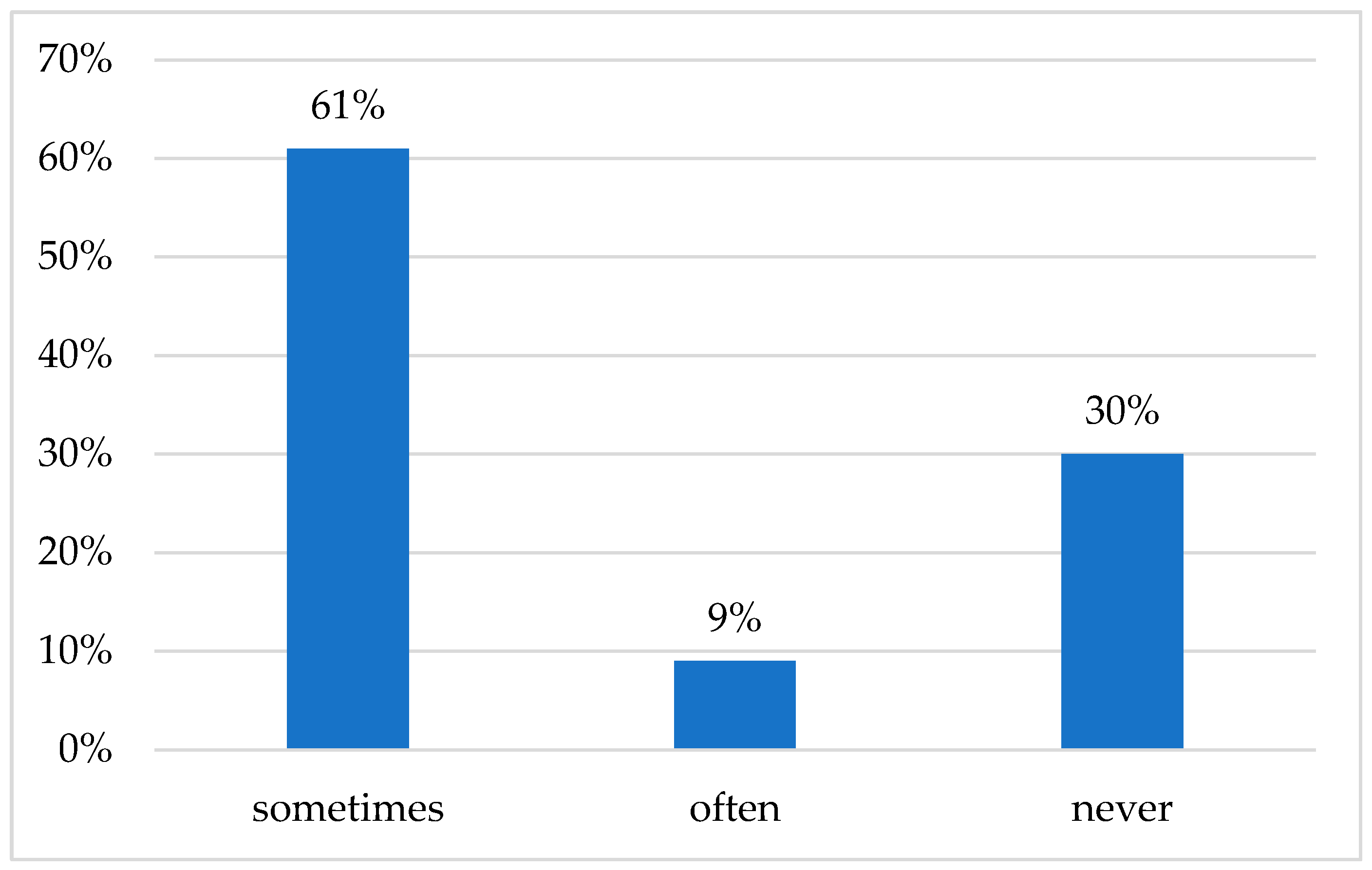
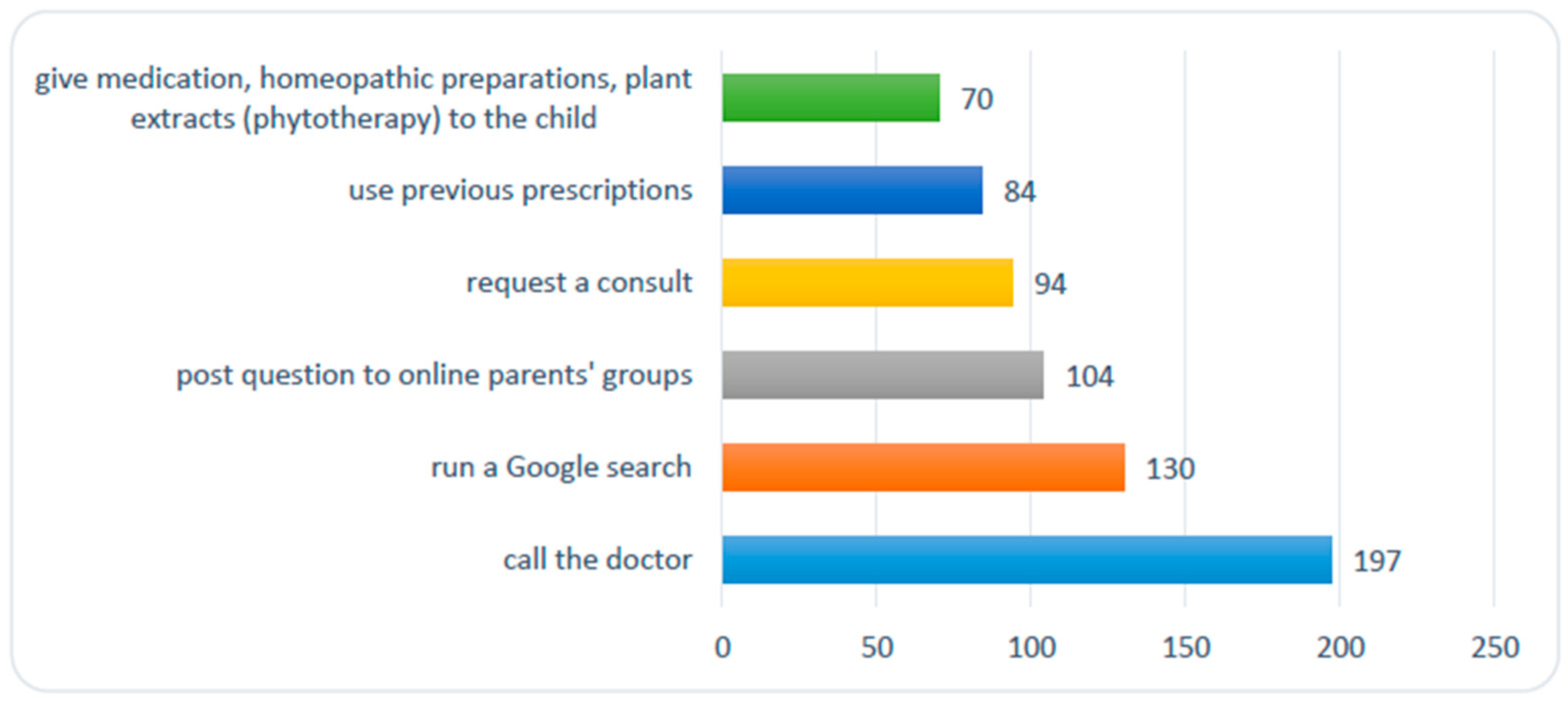
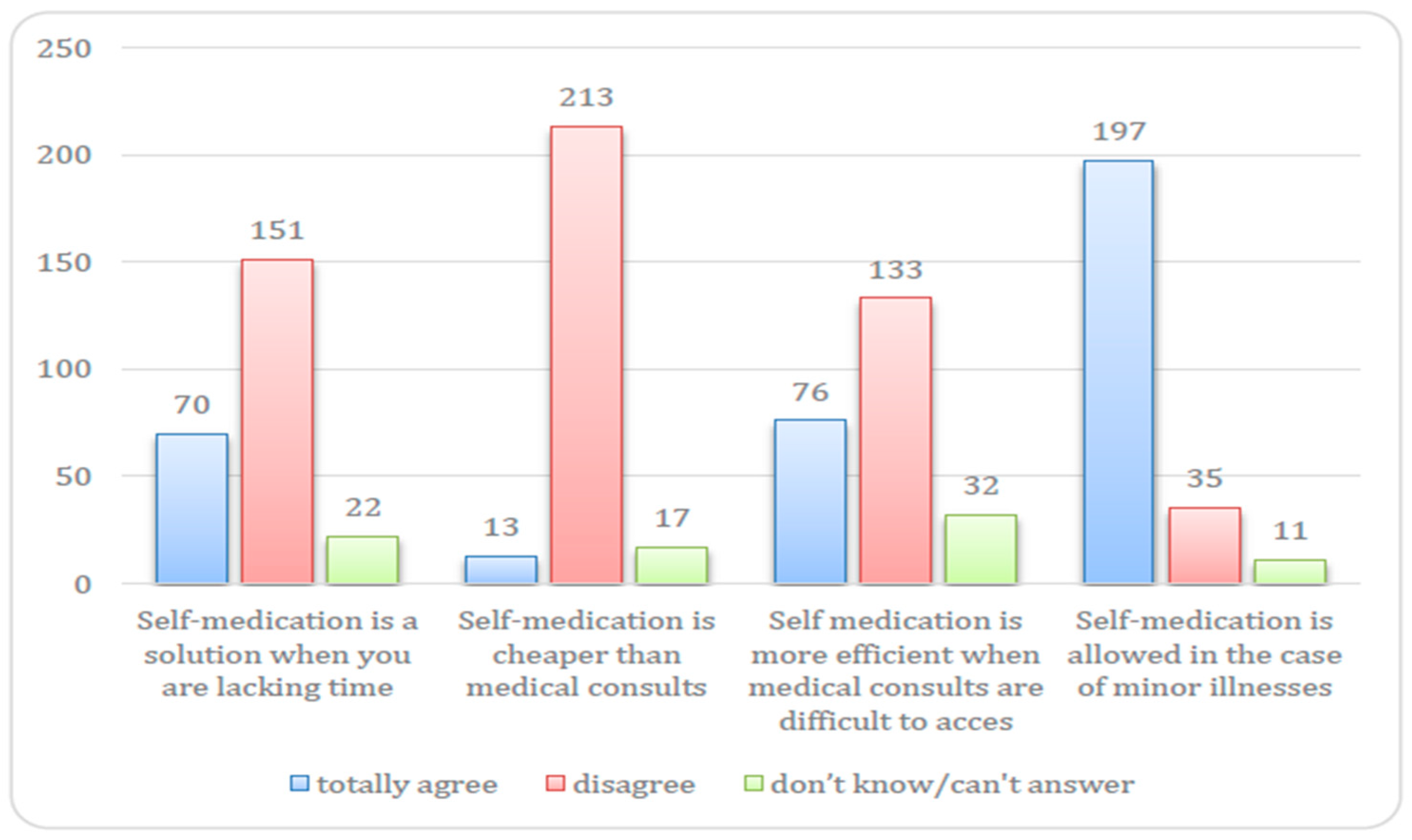
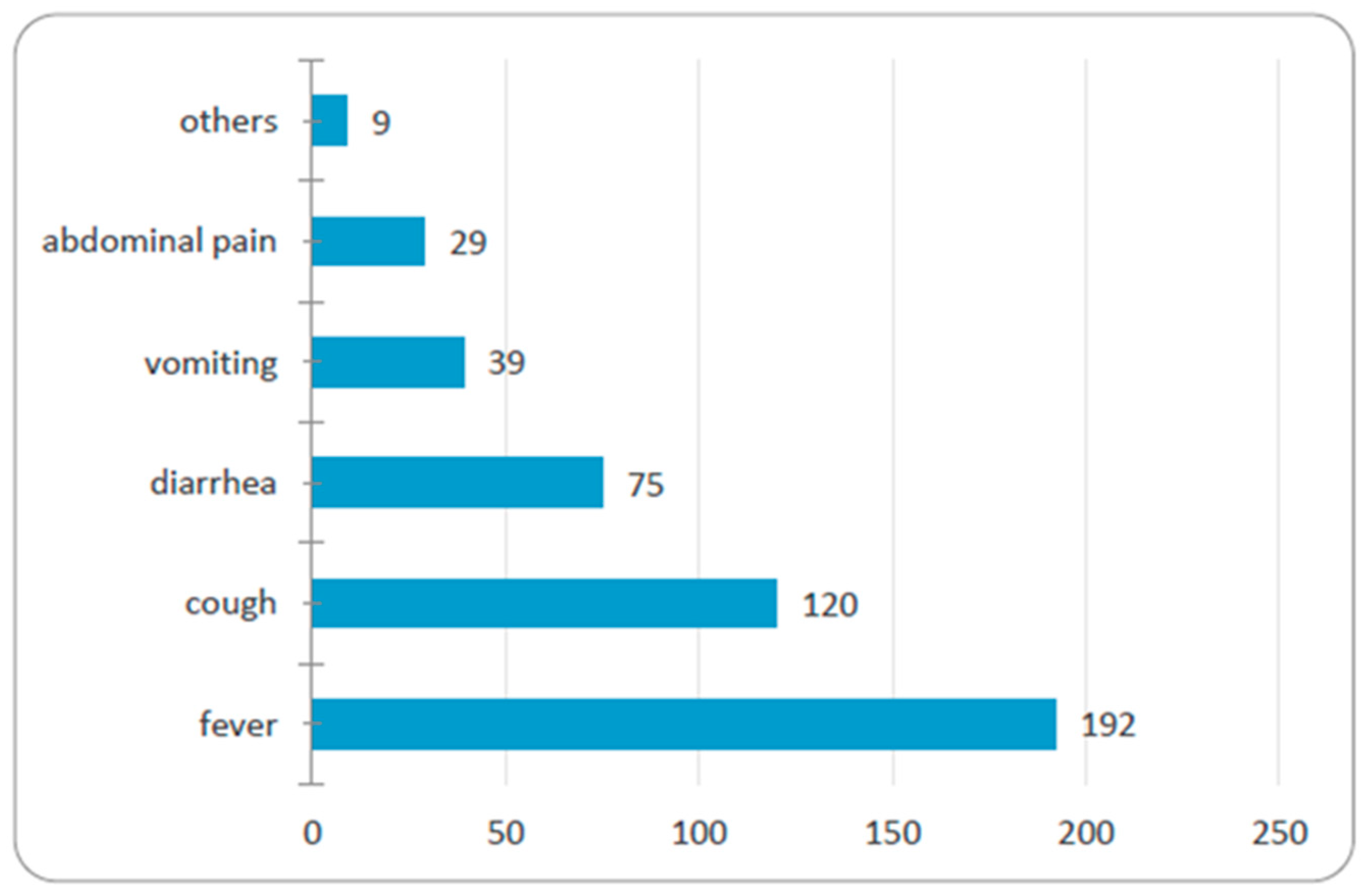
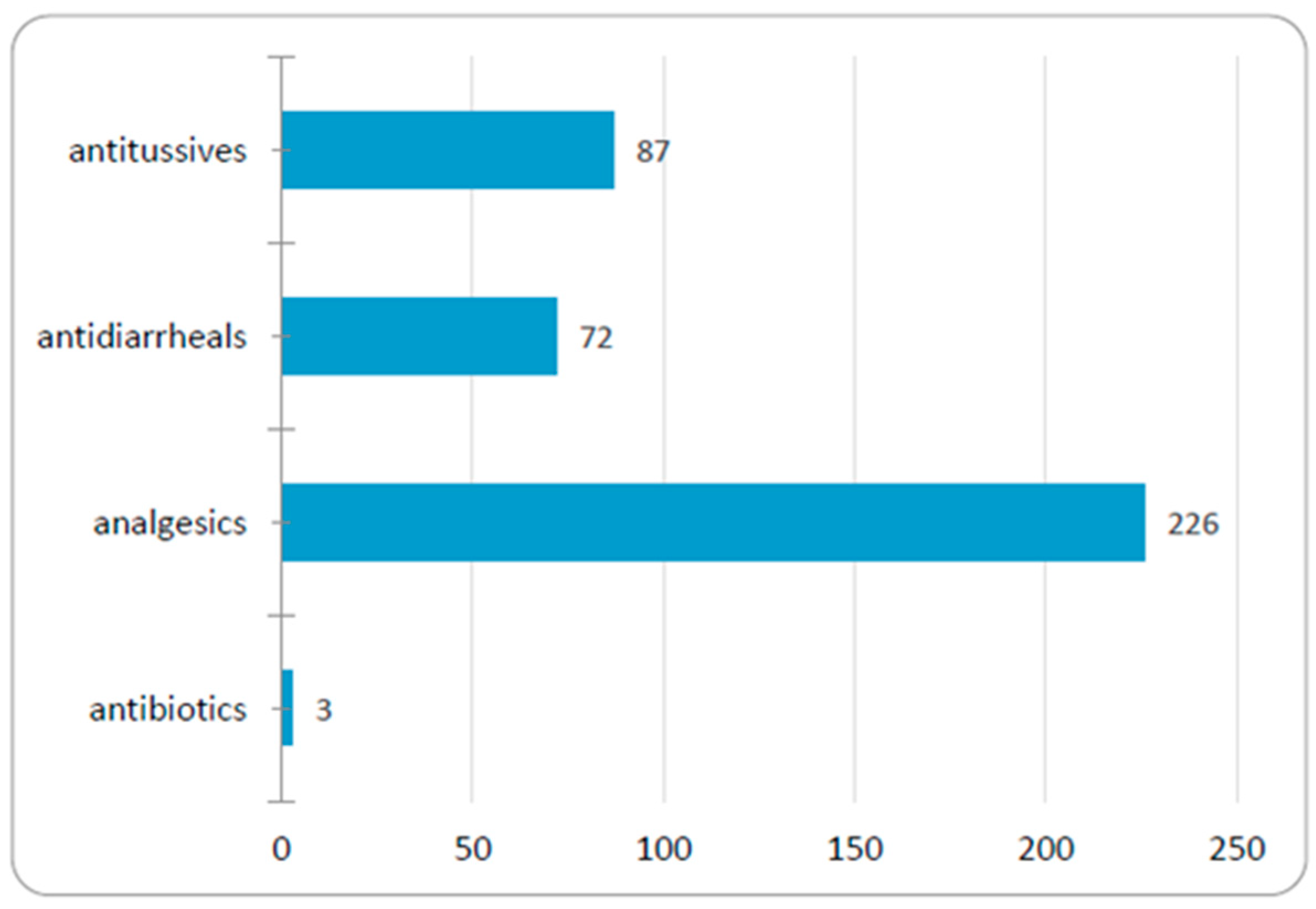
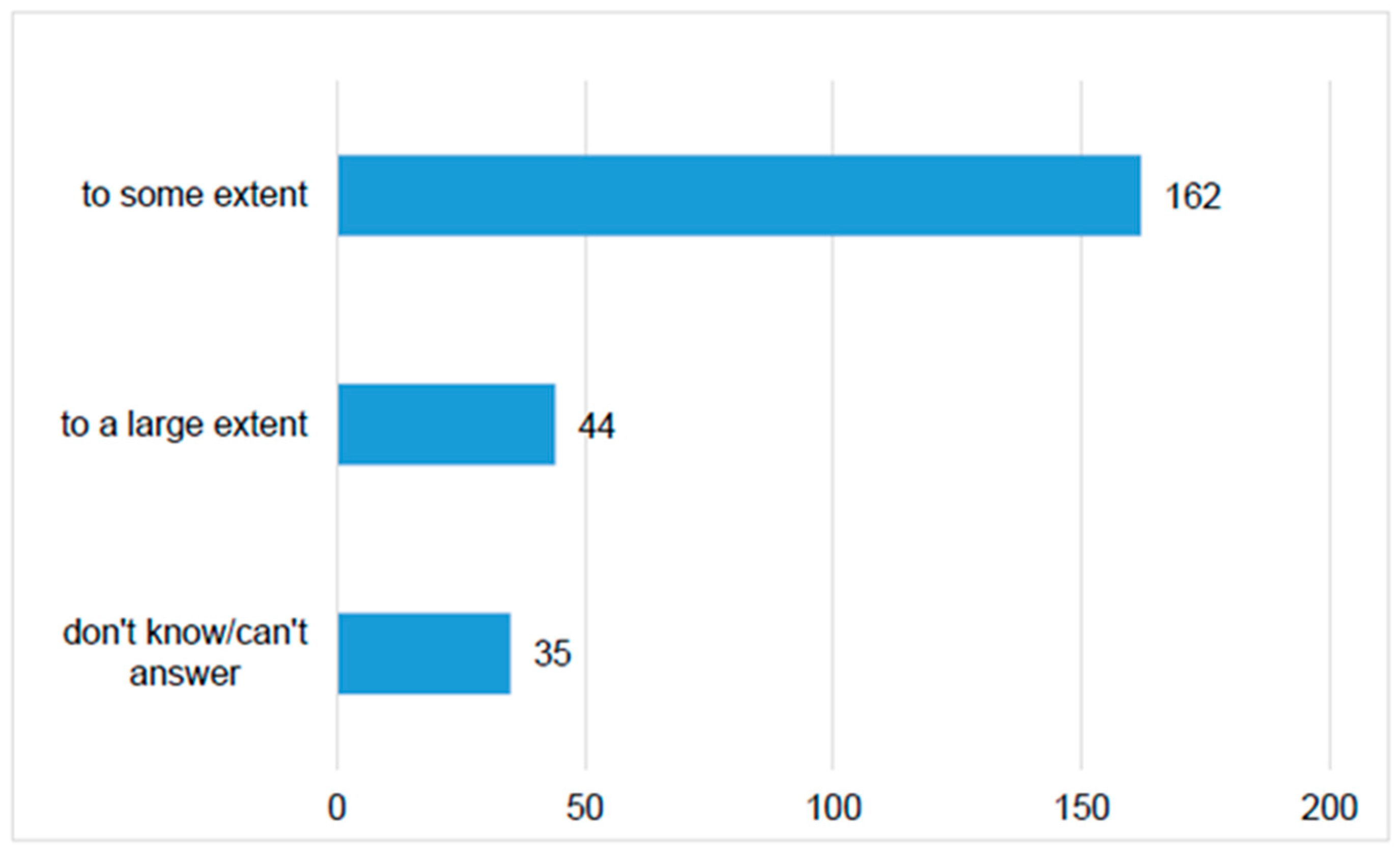
| N | % | ||
|---|---|---|---|
| Age | 18–25 years | 7 | 3 |
| 26–33 years | 112 | 46 | |
| 34–41 years | 101 | 42 | |
| 41–48 | 19 | 8 | |
| +49 | 2 | 1 | |
| Total | 241 | 100 | |
| Gender | Male | 26 | 11 |
| Female | 215 | 89 | |
| Total | 241 | 100 | |
| Marital Status | Married | 235 | 97 |
| Unmarried | 4 | 2 | |
| Divorced | 2 | 1 | |
| Total | 241 | 100 | |
| Number of Children Per Family | 1 child | 144 | 59 |
| 2 children | 90 | 37 | |
| 3 children or more | 7 | 3 | |
| Total | 241 | 100 | |
| Education | Baccalaureate | 29 | 12 |
| University degree | 162 | 67 | |
| PhD or postgraduate studies | 50 | 21 | |
| Total | 241 | 100 |
| Number of Children Health Issues In the Last 6 Months | How Many Times Did You Give Drugs to Your Children without Medical Advice? | Total | p * Value | ||
|---|---|---|---|---|---|
| Often | Sometimes | Never | |||
| less than 2 | 14 (7%) | 126 (61%) | 67 (32%) | 207 (100%) | 0.004 |
| more than 2 | 8 (25%) | 19 (59%) | 5 (16%) | 32 (100%) | |
| Total | 22 (9%) | 145 (61%) | 72 (30%) | 239 (100%) | |
| Self-Medication Is Allowed in Case of Children’s Minor Health Issues | |||||
|---|---|---|---|---|---|
| Agree | Disagree | Total | p * Value | ||
| Parental medication of children without medical advice | yes | 146 (92%) | 12 (8%) | 158 (100%) | |
| no | 49 (70%) | 21 (30%) | 70 (100%) | 0.000 | |
| Total | 195 (85%) | 33 (15%) | 228 (100%) | ||
| Self-Medication Is a Solution When Health Services Are Difficult to Access | ||||||
|---|---|---|---|---|---|---|
| Agree | Disagree | Total | p * Value | |||
| Parental medication of children without medical advice | yes | 63 (44%) | 79 (66%) | 142 (100%) | ||
| no | 13 (19) | 54 (81%) | 67 (100%) | 0.000 | ||
| Total | 76 (36%) | 133 (64%) | 209 (100%) | |||
| Self-Medication Is a Solution When You Do Not Have Enough Time | |||||
|---|---|---|---|---|---|
| Agree | Disagree | Total | p * Value | ||
| Parental medication of children without medical advice | yes | 55 (37%) | 93 (63%) | 148 (100%) | |
| no | 15 (21%) | 56 (79%) | 71 (100%) | 0.02 | |
| Total | 70 (32%) | 149 (68%) | 219 (100%) | ||
| When Choosing to Handle Things on Your Own, How Do You Procure the Medicine? | Self-Medication Is Allowed in the Case of Minor Health Issues | Total | |||
|---|---|---|---|---|---|
| System Missing | Agree | Disagree | Don’t Know/Don’t Answer | ||
| directly from the pharmacy | 1 (0.4%) | 189 (81%) | 32 (14%) | 11 (5%) | 22 (100%) |
| from acquaintances/relatives | 1 (33%) | 2 (67%) | 0 (0%) | 0 (0%) | 146 (100%) |
| from previous prescriptions | 0 (0%) | 4 (80%) | 1 (20%) | 0 (0%) | 73 (100%) |
| Total | 2 (0.8%) | 195 (81%) | 33 (14%) | 11 (5%) | 241 (100%) |
© 2020 by the authors. Licensee MDPI, Basel, Switzerland. This article is an open access article distributed under the terms and conditions of the Creative Commons Attribution (CC BY) license (http://creativecommons.org/licenses/by/4.0/).
Share and Cite
Tarciuc, P.; Stanescu, A.M.A.; Diaconu, C.C.; Paduraru, L.; Duduciuc, A.; Diaconescu, S. Patterns and Factors Associated with Self-Medication among the Pediatric Population in Romania. Medicina 2020, 56, 312. https://doi.org/10.3390/medicina56060312
Tarciuc P, Stanescu AMA, Diaconu CC, Paduraru L, Duduciuc A, Diaconescu S. Patterns and Factors Associated with Self-Medication among the Pediatric Population in Romania. Medicina. 2020; 56(6):312. https://doi.org/10.3390/medicina56060312
Chicago/Turabian StyleTarciuc, Petruța, Ana Maria Alexandra Stanescu, Camelia Cristina Diaconu, Luminita Paduraru, Alina Duduciuc, and Smaranda Diaconescu. 2020. "Patterns and Factors Associated with Self-Medication among the Pediatric Population in Romania" Medicina 56, no. 6: 312. https://doi.org/10.3390/medicina56060312
APA StyleTarciuc, P., Stanescu, A. M. A., Diaconu, C. C., Paduraru, L., Duduciuc, A., & Diaconescu, S. (2020). Patterns and Factors Associated with Self-Medication among the Pediatric Population in Romania. Medicina, 56(6), 312. https://doi.org/10.3390/medicina56060312







